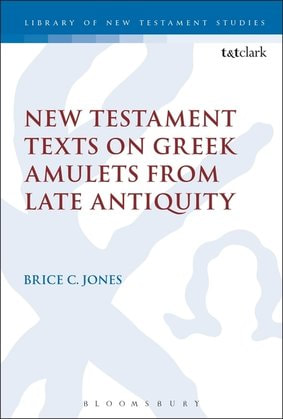|
I have received some good feedback about these little manuscript "quizzes" so we'll keep them going until you all get bored! For this week, I have included a manuscript dear to my heart. This papyrus has been in my hands on more than one occasion. Note: this papyrus is not a continuous manuscript of the NT. So, which NT manuscript is this? What is interesting to you about this particular piece? Does anything odd stand out? Feel free to discuss or comment in the comments section below.
Update: So, several people nailed it on the head: this is P.Yale I 3 (P50). As I mention in the comments to this post, I had the privilege in 2010 of examining this papyrus on several occasions. For those interested in the knowing more about the strange lines on the first folio, see my comments below.
2 Comments
This NT manuscript is interesting for a variety of reason, one of which is the cursive note at the bottom. This is not a continuation of the NT text above, nor has it been deciphered given its ungrammatical characteristics. So, which NT manuscript is this? And does anyone want to take a stab at the meaning and function of the scribbled note?
Update: As several people have pointed out on Facebook, via email, and through the comments here, this is indeed P.Oxy. II 209 (P10). The most exhaustive study of it is the recent article by AnneMarie Luijendijk, "A New Testament Papyrus and Its Documentary Context: An Early Christian Writing Exercise from the Archive of Leonides (P.Oxy. II 209/P10)," JBL 129.3 (2010): 575-596. Here is a snapshot of a marginal note from a New Testament manuscript. Can you identify the manuscript? A couple things to note. The marginal note is upside down and may not have any relationship to the NT text. If you really want to have fun, what do you think this note says? Transcriptions are welcome! Update: Some discussion of this manuscript took place on Facebook, where Edgar Ebojo nailed the identification: this scribal note is found in the lower margin of a folio from P.Bodmer XV (=P75). As for the note itself, Maurice Robinson kindly pointed out that υον is an attested abbreviation for ὑίος (see LSJ s.v.), although it is predominantly found in inscriptions and in an earlier period (Ptolemaic). Paap doesn't have an example of υον being used as a nomen sacrum, and since there is no supralinear stroke we can probably rule this out as being a nomen sacrum. Martin and Kasser restore it as τον υον ως̣ [κ]υ̣ρ̣ι̣ο̣[ν] απο της τ̣[ρα]πεζ̣[ης], but κυριον is not certain. There is another marginal note in P.Bodmer XV written in Coptic, so might the odd υον be explained as Coptic interference of some sort? I have no idea but suggestions are indeed welcome. Look for another "Name That NT Manuscript" post next week!
|
Archives
December 2020
Categories
All
|



